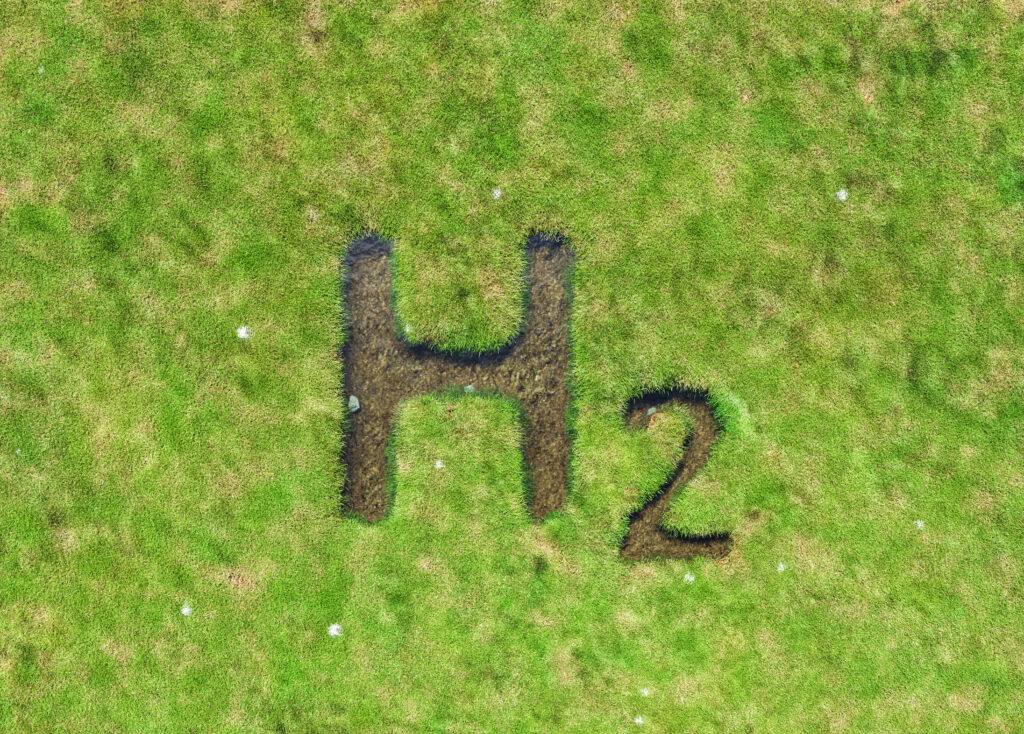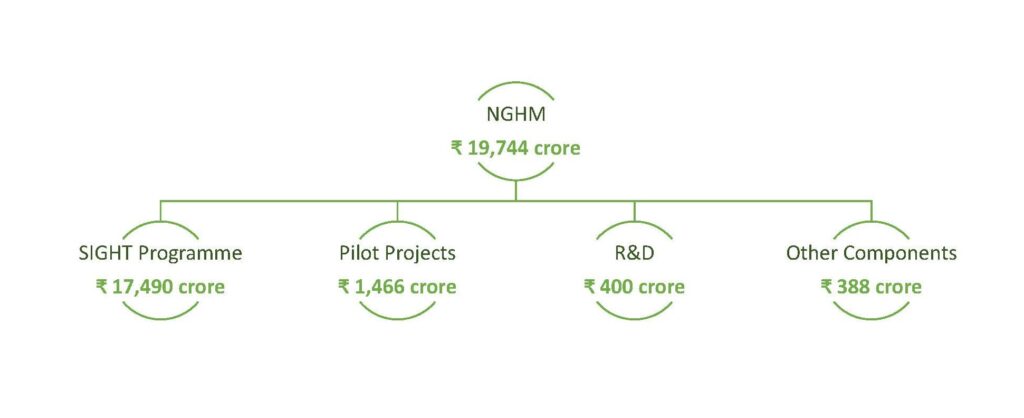- Jaideep Saraswat, Nikhil Mall, and Varun B.R.

India’s tryst with Hydrogen has been progressively gaining momentum over the last two decades. Beginning in 2003, with the institution of the National Hydrogen Energy Board, the Government has been cognizant of Hydrogen’s potential as a key energy vector to enhance India’s energy security. In light of India’s climate goals, it has also gained importance as a key driver to decarbonise hard-to-abate sectors. The recently launched National Green Hydrogen Mission (NGHM) is a critical and timely initiative that has been envisaged to facilitate demand creation, production, utilization, and export of Green Hydrogen.
Monetary Outlay: The initial outlay of the mission is pegged at ₹ 19,744 crore. The Mission constitutes three major components as illustrated in Figure 1. The Ministry of New and Renewable Energy has been tasked with formulating the guidelines for implementing the various scheme components.

Mission Outcomes
- RE capacity addition~125 GW
- ₹ 8 lakh crore investments
- Over six lakh jobs
- 50 MMT per annum of CO2 emissions abated
Production Target
This mission aims to produce at least 5 MMT of green hydrogen per annum by 2030. Also, there is enough leeway provided to reach 10 MMT per annum owing to the growth of export markets. This is estimated to be about 10 percent of the global market.
Phase-wise Timeline-
Phase-1 (2022-23 to 2025-26): In the first phase, the mission is focused on demand creation in existing hydrogen end-use sectors such as fertilisers, refineries, and city gas sector. To support this demand, building electrolyser manufacturing capacity in India is another key aspect to be scaled under this phase. Moreover, a robust regulatory framework and necessary standards will be developed to facilitate growth in the hydrogen ecosystem and ensuring its assimilation into the global market. Further, pilots in sectors like steel production, long-haul heavy-duty mobility, and shipping are planned to demonstrate decarbonisation potential in the hard-to-abate sectors.
Phase-2 (2026-27 to 2029-30): In the second phase, learnings from the pilot projects in Phase-1 will be applied to commercialising green hydrogen projects for steel production, long-haul heavy-duty mobility, and shipping. Further, pilot projects in sectors such as railways and aviation will be carried out.
Standards and Regulations
All necessary regulatory provisions will be notified by the end of 2023-24.
Integrated Mission Strategy
At the Central level, around 14 Ministries and five departments have been identified and made part of an integrated mission strategy for effective implementation of the mission.
End-Use Targets
- Two plants for green hydrogen-based urea and Di-Ammonium Phosphate (DAP) will be established via a competitive bidding route in the first phase.
- At least two ships to run on green hydrogen or other derived fuels by 2027 by Shipping Corporation of India.
- India’s oil and gas PSUs will be required to promote at least one ship each on green hydrogen by 2027; thereafter these companies will have to charter one ship every year for the rest of the mission.
- At least one port having green ammonia bunkers and refueling facilities must be ready by 2025. Such facilities must be established at all ports by 2030.
- At least two green hydrogen hubs in the first phase will be developed.




